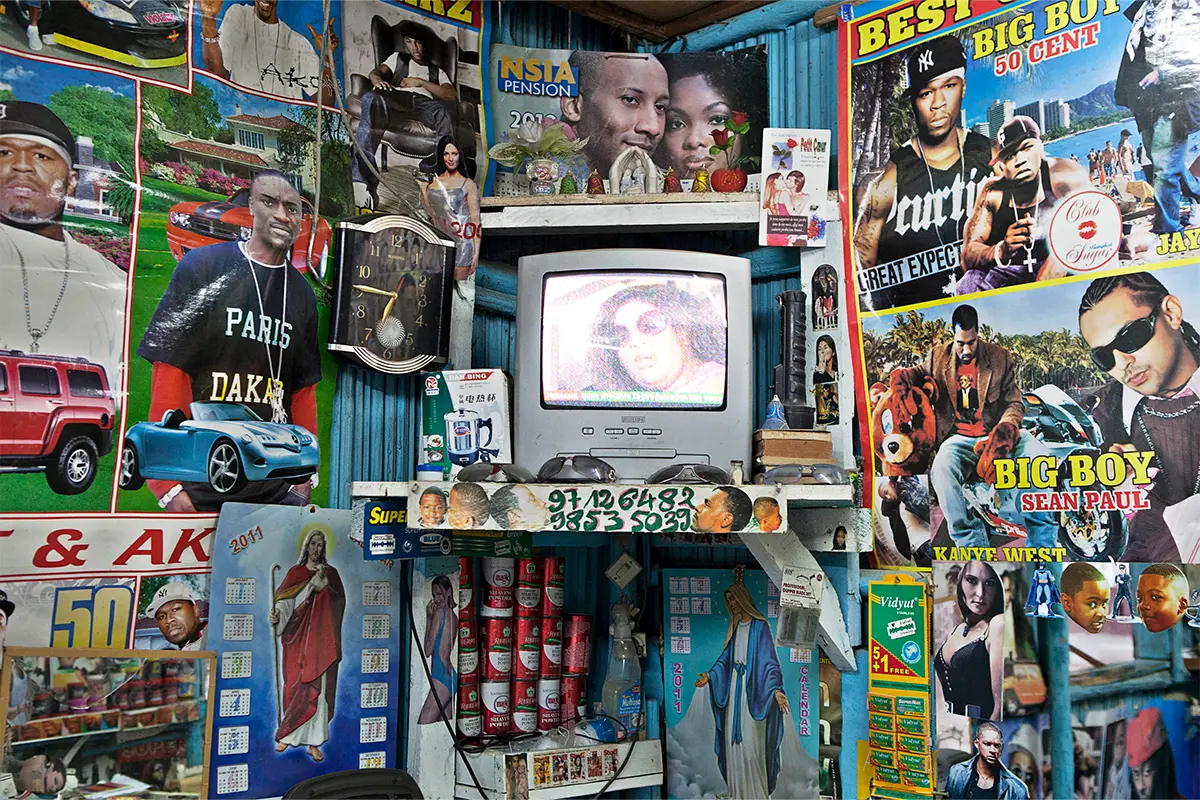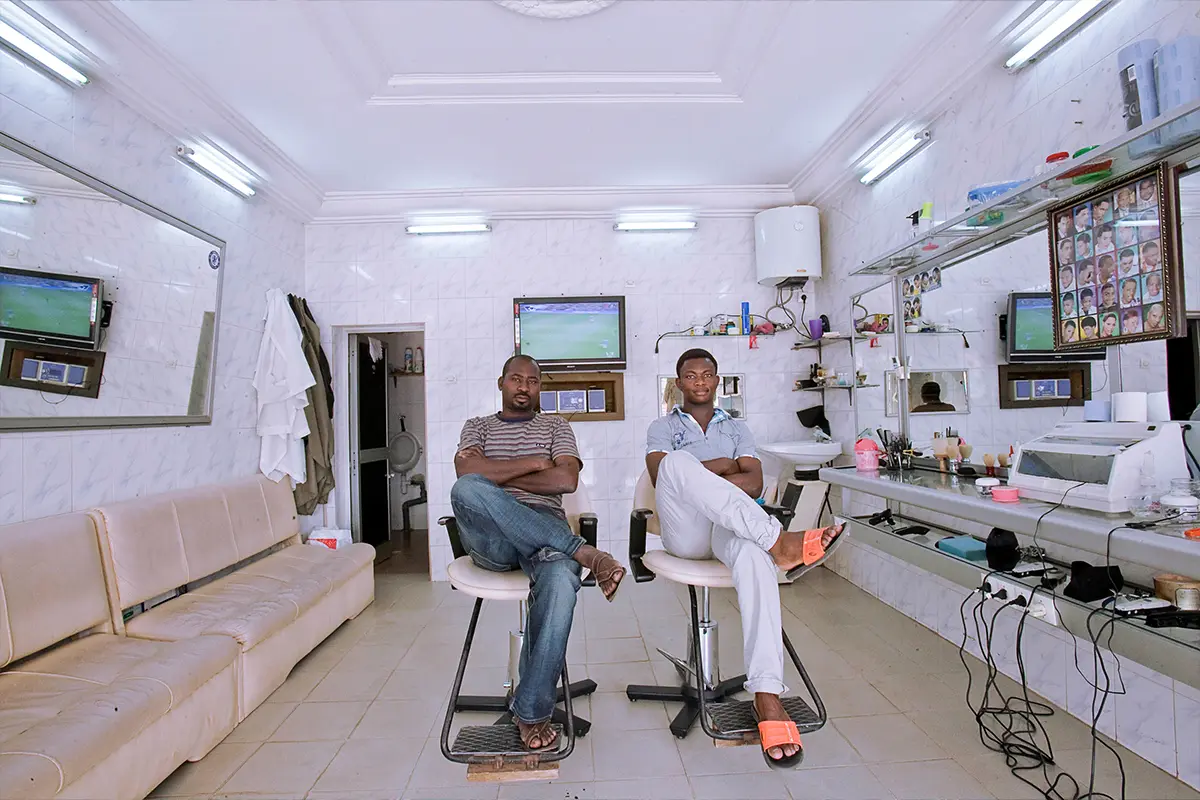Navigating the urban labyrinth of Lagos: Andrew Esiebo’s visual journey talks about the chaos, cultural richness, and struggles of Africa’s hustling megacity
Andrew Esiebo is a Nigerian photographer born in Lagos, the largest city in Africa and the industrial capital of Nigeria. «I see myself as a visual storyteller and a lens-based artist. I have a strong interest in the human condition, examining how individuals grapple with life’s challenges, strive for a better future, and navigate through different spaces. Growing up in Lagos, I’ve witnessed the city’s ongoing transformation. Today, Lagos is a densely populated metropolis where everyone is vying for their own place. To me, it’s crucial to observe human behavior in this vast urban amalgamation of tradition and modernity, all intertwined».
Urban Contrasts in Lagos, Nigeria
In his works, Andrew Esiebo captures the rapid development of urban Nigeria, as well as the country’s rich culture and heritage. «I am intrigued by this mix: on one side of the city you see old architecture and abandoned buildings, on the other side, you see contemporary architecture. There are a lot of elements that make the city beautiful and progressive, but you can perceive there’s been a long lack of good urban planning in the past.
The city has grown very organic, on its way. If I look at transportation, today it’s a big challenge in the city: people have to struggle to find their way to move, and the same thing happens with housing. The city doesn’t have proper housing for the masses, so people just keep building on way, sometimes not according to the urban regulations. It’s kind of a match-up of old, and new, and people had to find their own way of negotiating or navigating or surviving in the city. This makes the city full of energy».
Andrew Esiebo – Unconventional Soccer
Among Andrew Esiebo’s projects, there is “Love of It”, a project focusing on exploring the multifaceted presence of soccer in daily lives. Specifically, this project centers on Nigeria, where soccer transcends the boundaries of traditional stadiums, making its way into various unconventional environments. «Using boys playing football serves as a good illustration of how the city functions: there are no designated soccer fields, so individuals spot an open area, which might be on the side of the road or in front of a public building, and they start playing.
People simply adapt and improvise; the boundary between public and private space is quite blurred. In certain places, even if it’s a public area, some people don’t perceive it as their own and thus don’t utilize those spaces. Conversely, some private spaces are used as if they were public. It’s a city characterized by organic and spontaneous interactions, but it doesn’t imply a complete absence of rules or urban planning. Rather, it’s a result of a lack of precise design, leading residents to forge their own path».
Lagos: a challenging city – photographer Andrew Esiebo
Lagos is one of the world’s largest megacities, with certain projections suggesting that its metropolitan area is home to approximately 21 million people «In this city, survival hinges on one’s creativity: you must employ ingenuity in the way you navigate both public and private spaces. An illustrative example can be found when attempting to park in front of a business or store. While someone might inform you that parking is prohibited, it doesn’t necessarily imply ownership of the parking space. It’s more a matter of the individual’s perception that the space belongs to them, even though it isn’t truly theirs. At times, I find myself asking these people, “You don’t own this street, do you?”
Lagos is a city brimming with energy and contrast. It’s a place of profound inequality, where the chasm between the affluent and the underprivileged is vast, yet they often coexist in close proximity. This inequality is starkly evident: in some areas, buildings and infrastructure showcase impressive development, while in close proximity, things appear rundown. The gulf between the rich and the poor is substantial, but at the same time, Lagos offers numerous opportunities. Amid these challenges, there lies the potential for innovative solutions».
Social exclusion and inequality
Born as a port city, it has evolved into a center of commerce, industry and art. However, it is grappling with the formidable task of accommodating and supporting its rapidly expanding population and struggling with social exclusion and inequality. «Lagos is undergoing transformation, characterized by the development of new infrastructure, including a metro line (light rail line), and the construction of modern buildings.
These new structures and infrastructure often remain beyond the reach of the average citizen. As a result, those who cannot afford to be part of this transformation are left with two challenging options: they either find themselves living on the streets within the city or are compelled to relocate away from it. Until just a few years ago, Lagos did not exhibit such stark disparities, but today, it appears to be embroiled in what seems like an economic wall, pushing the less privileged residents out.
Lagos is not yet a tourist destination, but the interest of private investors is gradually growing, with many choosing waterfront locations to construct establishments such as hotels. Nevertheless, my concern regarding these projects is rooted in the negative implications associated with them. Year after year, the threat of rising sea levels and coastal flooding continues to escalate, especially in vulnerable areas of the city. Notably, it’s only the wealthiest segments of the city, like Eko-Atlantic, that have managed to address the flooding issue with projects backed by private investors. Unfortunately, these endeavors often come at a high cost, making them unattainable for ordinary residents».
A nightlife in Lagos – Andrew Esiebo
Lagos is also known for its bustling streets and night vibrancy. The creative work explores the city’s pulsating nightlife, including its bustling bars, clubs, and venues that come alive after nightfall. «In recent years, Lagos has undergone a transformation in its nightlife scene, marked by an impressive surge in activity. People, often stressed and brimming with energy, seek an escape to enjoy their time. This vibrant aspect of the city, which I aim to showcase, stands in contrast to Lagos’s reputation as a perilous place to venture out into. The city’s nightlife thrives across various neighborhoods, encompassing affluent and middle-class districts.
Music plays a pivotal role in this scenario, as our rich musical culture significantly contributes to the city’s vibrant nightlife. Lagos’s nightlife is a tapestry of colors and experiences, and it’s precisely this vibrancy that inspired my project. I’m keen to reveal this facet of Lagos because the city is frequently associated with danger, crime, and inadequate infrastructure. However, this side of the city radiates authentic joy and passion. It’s a place where people come together, seeking a good time as a respite from the challenges of their daily lives. Their self-expression extends to the vibrant clothing they wear, their choices in consumption, and their enjoyment of music and life».
African influence in the contemporary art scenario
Nigeria plays a lead role in the rising popularity of African arts: the designer Demas Nwoko just received the Golden Lion for Lifetime Achievement at the 2023 Venice Biennale. «African art is gaining popularity, perhaps because the world has reached a point where it is more receptive to it. There is a growing desire to witness, comprehend, and appreciate African art and culture. African arts and culture have been vibrant for a long time, but now people are actively seeking to learn about and embrace them. The richness and diversity of African culture are truly remarkable. Furthermore, I personally find African art uplifting. Our cultural expressions, be it through music or art, have a unique ability to uplift the human spirit, regardless of the challenges we face. They convey a strong sense of positivity and serve as a source of inspiration».
Andrew Esiebo’s photos flexibly employ vibrant colors and black and white in relation to the project he is conducting, without stylistic rigidity. «The choice of colors is closely tied to the subject matter and the corresponding mood. For instance, when exploring the Negus life or high life, I perceive these spaces as highly uplifting and vibrant. Therefore, it only makes sense to mirror the exuberance and vividness of these spaces in the subject matter. Conversely, when delving into the theme of surviving dreams, which revolves around a coach or a football figure reflecting on their life, both past and present, I find that black and white serves as a suitable tool to evoke a sense of nostalgia and capture elements of the past».
Lagos and Andrew Esiebo – a hustling megalopolis
Someone says that no one knows with any certainty the population of Lagos. Local demographers claim that 5,000 people migrate to Lagos every day, mostly from the Nigerian countryside, and the city’s growth seems unstoppable. It doesn’t sound surprising that a recent continental survey by a South African foundation found that 73% of young Nigerians expressed an interest in emigrating within the next three years. «At this point in my life, I find myself growing weary of urban settings. My aspiration is to reside in a remote area characterized by abundant nature, fewer vehicles, reduced pollution, and a sparser population.
The stress and pollution that accompany urban living have taken their toll on me. It often feels as though I must constantly navigate the stark contrast between lifestyles. Lagos, which I often describe as an ‘urban jungle,’ is dominated by concrete. Consequently, my current preference leans toward living in a more secluded and verdant environment, which I find immensely enjoyable. Nevertheless, I still find myself returning to the city almost every day or at least every week. This choice brings me contentment and a deeper connection with nature».
Andrew Esiebo
Andrew Esiebo is a visual storyteller/Artist whose practices investigate themes such as sexuality, football, popular culture, urbanism, migration, religion, and spirituality. He is based in Nigeria, from where he works around the world. His work has been widely exhibited and His interest in social issues has led to collaborations with a number of institutions, including King’s College London, the University of Padova in Italy, National Geographic Magazine.




















